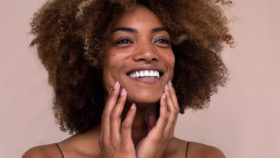Is a Spray Tan a Safe Alternative?
The summer rays are beginning to dwindle (which is a great thing if you live in Texas) but your beautiful summer tan may also be slowly starting to fade. Its no secret that we look better with a little bit of color in our skin and the vitamin D helps boost our mood and self-esteem, maybe even making you feel a little sexier. So for many of us the thought of how to extend our pretty summer tan pops into our head.
We know how dangerous tanning beds are, right?
- Tanning bed users are 75% more likely to develop melanoma than those who have never used a tanning bed.
- Using tanning beds makes you 2.5 times more likely to develop squamous cell carcinoma and 1.5 times more likely to develop basal cell carcinoma.
- Nearly 30 million people use indoor tanning beds in the U.S every year. 2.3 million of them are teens :/
As an 18 year old college kid I was one of those tanners. With my bleach blonde hair I needed to have a tan to match, right? I also grew up on an island, spending one too many days pouring oil over my body trying to get a tan and once even ended up in the hospital for a sunburn – but that’s a story involving the common sense of a teenager and large amount of Dominican Rum, so I won’t get into it here. Either way, I ended up with malignant melanoma on my face at the age of 20.
So when the end of the summer comes and I long to take my sun kissed color with me for the rest of the year the thought of a tanning bed makes me sick to my stomach. But what about a spray tan? There are even “organic” spray tans out there, surely that’s an option. The question is: is it a safe option?
What’s in a Spray Tan?
The active ingredient in most sunless tanning products is dihydroxyacetone (DHA) which reacts with dead skin cells to temporarily darken the skin. It lasts about 5- 7 days on average. The FDA approved DHA for the external application on the skin – it’s not approved for application to areas near the eyes, mouth or nose. In my personal opinion the FDA approves chemicals, toxins, food dyes, and many other things that have been proven to have adverse health effects – like ADHD.
If you’re willing to trust the FDA to tell you what is safe then what’s wrong with a spray tan? Well. A spray tan is SPRAYED onto your entire body, including your eyes, mouth and nose. And while you’re getting sprayed you also happen to be breathing. Breathing means that DHA will be absorbed into your lungs and bloodstream.
Over the long run, inhaling DHA can cause inflammation similar to asthma as well as Chronic Obstructive Pulmonary Disease (COPD). Breathing these chemicals can also induce a genetic alteration for those predisposed to lung, breast or colon cancer.
Here’s an ABC report with more information on the dangers of spray tan.
What can I do instead?
If you really, really, really want a tan in the middle of winter for one reason or another and vanity is going to win over common sense (because lets be real- sometimes it does) I’d suggest finding a salon that does the old fashioned sunless tanner where it’s applied like a massage. Yes, the dihyxrodyacetone will still makes its way into your blood stream through the skin but at the very least you’re not getting it sprayed up your nostrils. I’d also avoid the face as much as possible or use a make-up bronzer that is designed to be used on the face. Check the Environmental Working Group website to find out about the toxic load of your favorite bronzer – or any other cosmetic for that matter.










